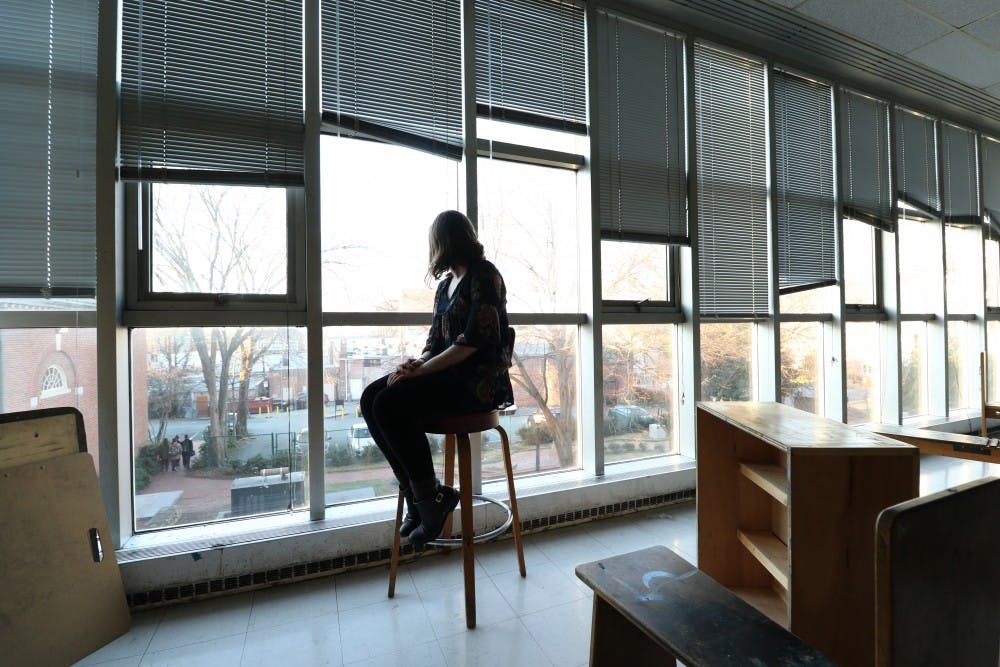“The first indication was hearing her talk about being so freaked out about this class and being so stressed out about it that she wanted to go to a different school and study something completely different than what she’s always dreamed of.”
The next indication, Buchanan said, was seeing Charlotte study compulsively for days on end and recite material perfectly in practice and then fail the exams.
“She’s not a stupid person,” Buchanan said.
“That was the indication there’s some disconnect here — this isn’t normal to not be able to perform on a test after working so hard.”
Charlotte has since traded in her biology major for studio art. While she’s content with the change and thankful for the opportunity to formally study her artistic passion, Charlotte wonders where she’d be if her ADD had been caught earlier.
“I would be in nursing school, probably,” Charlotte said. “There would be a very big difference in my life I think … I would have been able to focus, been able to achieve what I’m capable of achieving. But I’m just not at my full potential if I feel this way all the time.”
The challenges that drove Charlotte away from biology had been her norm for so long that identifying the warning signs became a personal hurdle.
For many students who face challenges like Charlotte’s, the warning signs of mental illness are likely to be swept in with the cultural norms of a college campus.
Allen O’Barr, director of counseling and psychological services, characterizes warning signs of mental illness as a change of baseline — a change in attitude, in sleep patterns, sexual appetite, general disposition.
“When sleep and appetite go off, it’s generally an indication that something biologically has changed,” he said.
Warning signs that might be glaringly obvious under different circumstances are often dampened by a typical college environment, particularly at the beginning of a student’s four years.
Changes in sexual habits are written off as the college experience. High stress and changes in sleep patterns are attributed to more challenging academics. And close friends or family who could recognize the change in baseline are often back home and oblivious to emerging problems.
To get the day's news and headlines in your inbox each morning, sign up for our email newsletters.
“This is a place where the individual themselves is looking for their own change in baseline,” O’Barr said.
“If you’re looking at your friends who’ve you known for only a month or two months, you’re basically judging them on where they are at that point.”
Intuition, education and communication are important tools for identifying warning signs in a college environment, O’Barr said.
“If it’s somebody you can talk to, you can say, ‘I noticed you’re kind of socially withdrawn,’ or ‘I noticed you’re kind of edgy. You always been that way?’” he said.
“In the risk-to-benefit ratio, it’s way better to risk the over-diagnosis than it is to under-diagnose.”
But college campuses are often short on the key demographic to ask the necessary questions, O’Barr said.
“Part of what we miss in this culture is mentors. We miss the elder,” he said. “We have some of that, we don’t have a lot of that.”
What you find instead are 20-somethings teaching 20-somethings, and not always to the collective benefit.
That’s where Tara Bohley and the Behavioral Healthcare Resource Program hope to enact change. Bohley directs the program aimed at training UNC staff and faculty to engage with students who come to them about mental health.
“What we’re trying to do with faculty and staff is be able to have them get more comfortable with asking follow-up questions,” Bohley said.
The program held its second round of training on Feb. 10 and has seen significant interest from library and athletics staff, Bohley said. Though students can enroll in the course, the program right now is geared toward faculty and staff because they’ll theoretically be at UNC longer.
Early intervention is key to the successful treatment of a mental disorder, Bohley said, and college is the most important time to tackle it.
People between the ages of 18 and 25 are most vulnerable to mental illness, she said, with 75 percent of all mental disorders already developed by age 24.
But college can also be one of the most difficult times to address mental illness.
“Unfortunately, or fortunately, it takes true face-to-face time,” O’Barr said.
“And yet the most costly thing we have in society right now is individual facetime … How do we take a university of 30,000 students, basically, and God knows how many faculty and staff, and go back to the individual relationship?”
university@dailytarheel.com



